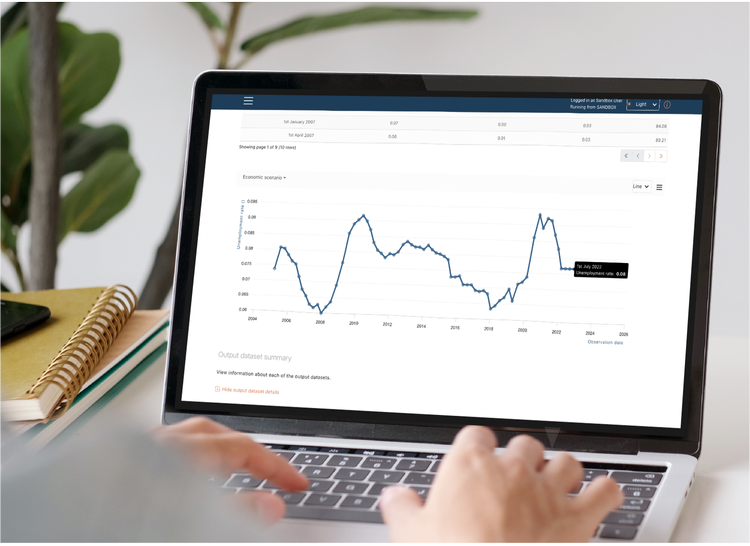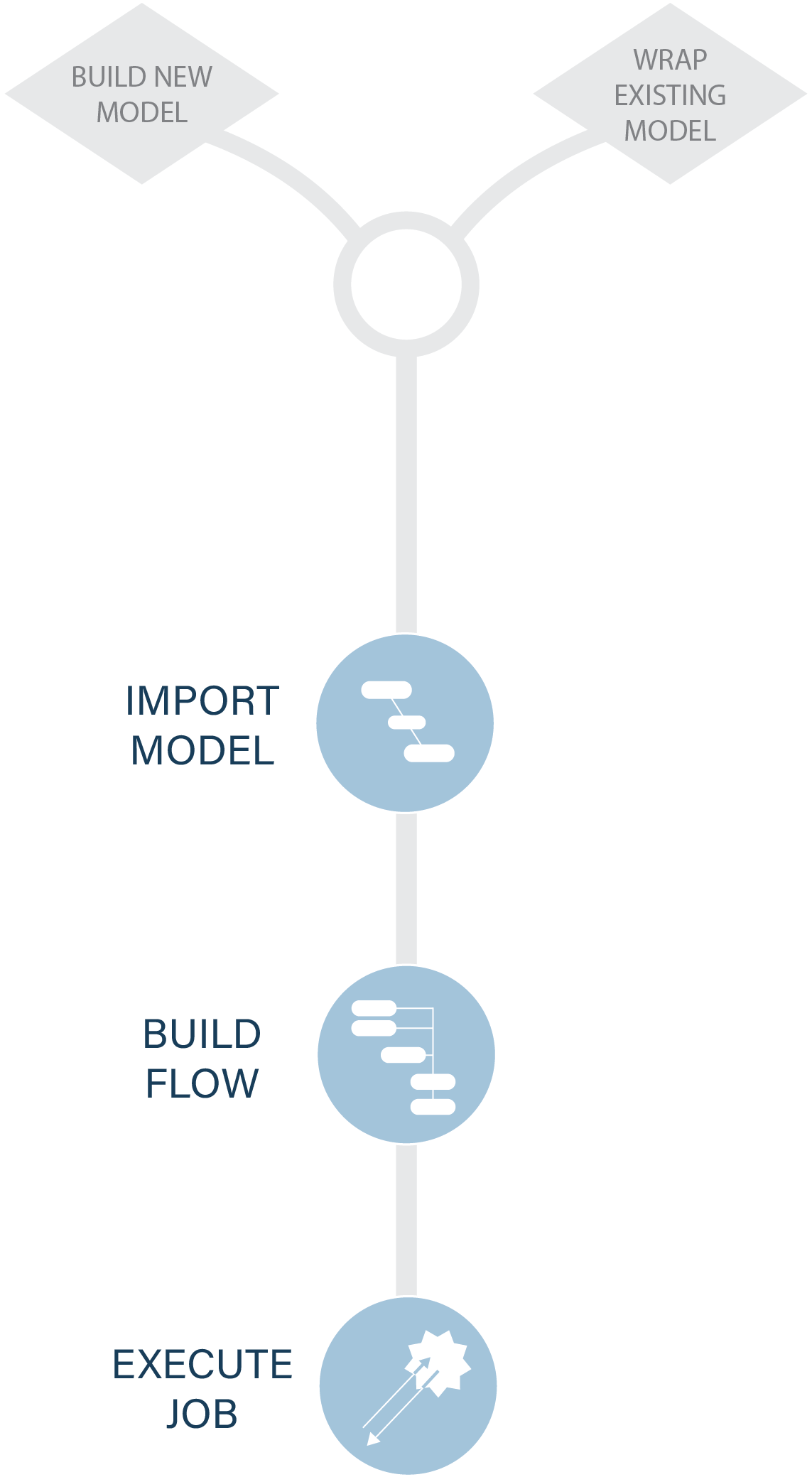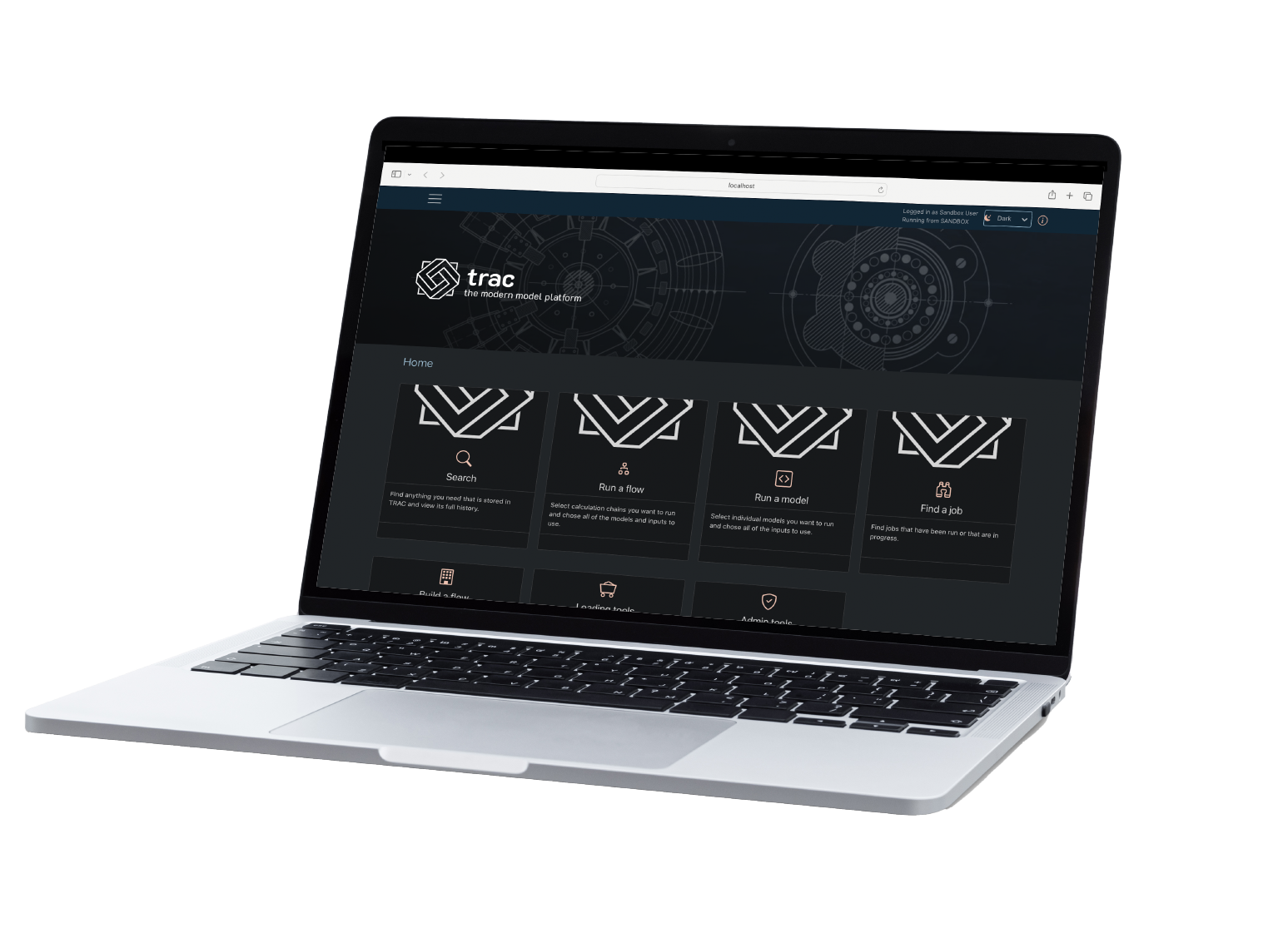Virtual Deployment Framework
Models are uploaded via a simple no-code process and ‘virtually deployed’ into calculation processes called Flows. The code stays in your repository until it is needed for a calculation.
Explore Virtual Deployment
See how to deploy models, build process flows and run jobs... all in under 3 minutes!
1. IMPORT DATA
Data can be imported via the UI or using a back-end process. The import creates both the physical records in your Data Store and TRACs internal representation of the data, which is used to build virtual deployments.
2. IMPORT MODELS
Models are uploaded from the repository with a few clicks. This creates TRAC’s internal representation of the model and makes it immediately available for use, to execute in a simple calculation or deploy to a Flow.
3. BUILD FLOWS
A Flow is the blueprint of a complex calculation involving multiple models which TRAC can run on demand. Each flow is like a ‘virtual deployment’. Flows can be imported or built on the platform with the FlowBuilder tool.
4. RUN JOBS
A Job is a calculation that TRAC orchestrates, using either a Flow or a Model as the blueprint. For each Job, TRAC fetches the data and model code from storage and runs the calculation, returning the results as a data object.

The Benefits of Virtual Deployments
NO-CODE ROUTE-TO-LIVE
With smart validations at each step of the journey, Virtual Deployments allow models to be safely imported from the IDE to production in a few minutes, with zero risk, zero coding and no platform-level interventions.
EXPLORE THE RTL

TRAC GUARANTEE
Virtual Deployments are central to the TRAC Guarantee, which eliminates deployment & change risk and ensures that every calculation run on the platform is fully auditable and can be repeated with just a few clicks.
EXPLORE THE GUARANTEEEXPERIMENTAL MODEL RUNS
With Virtual Deployments you are no longer restricted to having just one in-governance version of a model in production. Convert all your analytics into Flows and run them against production data and infrastructure to get rid of those clunky EUCs.
EXPLORE ANALYTICS
Schema Validations and No-code RTL

LOCAL RUNTIME (OPTIONAL)
Does the code execute in the IDE using the trac runtime (Python) package and local data inputs? If so, it will pass the next step.
SCHEMA PRESENCE
Does the model code contain a properly constructed function which declares its schema to the platform?
SCHEMA COMPATIBILITY
Does the proposed placing of a model in the Flow enable the input data requirements defined in the schema, to be satisfied?
SCHEMA CONFORMITY
Does the code perform in line with the declared schema when executed on the platform using the trac runtime service?
Model schema
A 'TRAC Model' is a self-describing (but otherwise standard) code block containing a custom function which declares the model schema .

INPUTS: The schemas of all the input datasets which the model needs in order to run.

PARAMETERS: The schemas of any parameters which govern how the model runs.

OUTPUTS: The schemas of the output datasets which are created when the model runs.
Visit our documentation site to explore TRAC's model API, learn how acess the runtime service in your IDE and see how to build self-describing models or 'wrap' existing code for deployment.
TRAC MODELLING TUTORIAL

